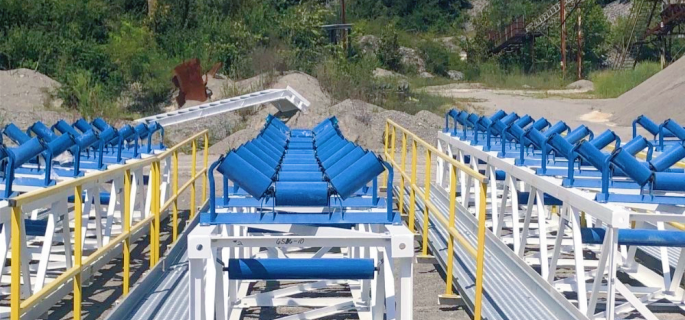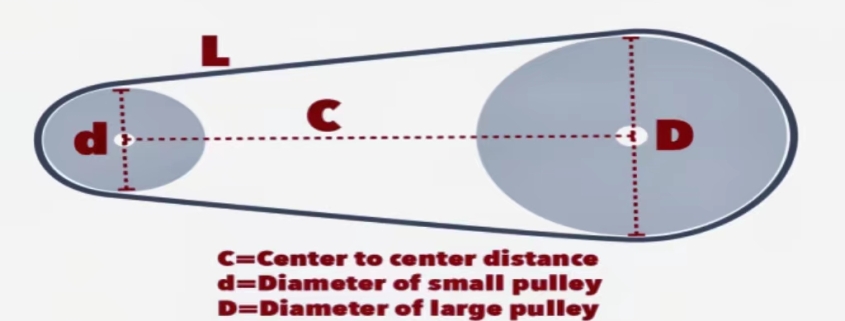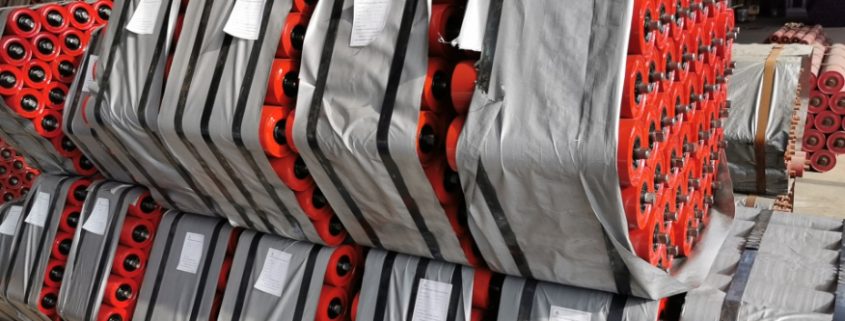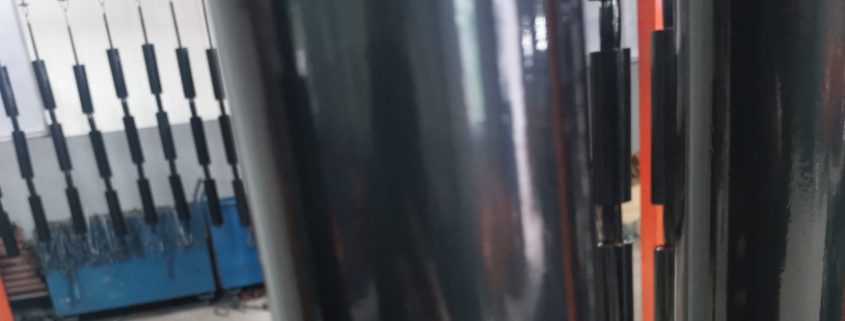Idler rollers are fundamental components in the realm of mechanical engineering and industrial design, playing a pivotal role in the smooth operation of conveyor systems and other machinery. Essentially, an idler roller is a type of wheel or gear that rotates to support and guide belts, chains, or other flexible materials, ensuring their efficient and uninterrupted movement across various applications. These rollers are critical in minimizing friction and wear, significantly enhancing the longevity and performance of mechanical systems. Found in a wide array of industries, including manufacturing, mining, automotive, and logistics, idler rollers are indispensable for their ability to facilitate the seamless transport of goods and materials, thereby optimizing productivity and operational efficiency. Their universal presence across different sectors underscores their importance in the modern industrial landscape.
Read moreCarrying idler roller is fundamental components of conveyor systems, designed to support the conveyor belt and the materials it transports. Positioned strategically along the length of the conveyor, these rollers ensure the belt remains in a continuous, smooth motion, preventing any sagging or misalignment that could disrupt the transportation process. The role of carrying idlers extends beyond merely supporting the belt; they play a crucial part in maintaining the efficiency and longevity of the conveyor system by reducing the friction between the belt and the conveyor frame. This not only facilitates the seamless movement of goods but also significantly minimizes wear and tear on the belt, thereby extending its service life. The importance of carrying idler rollers cannot be overstated, as they are key to the reliable and effective operation of conveyor systems in various industries.
Read moreConveyor systems play a pivotal role across a myriad of industries, from mining and agriculture to manufacturing and logistics. These systems are the lifelines of production lines, ensuring the smooth, efficient, and continuous movement of materials and goods. Central to the functionality and efficiency of these conveyor systems is the china conveyor roller idler frame. Serving as the backbone for conveyor belts, these idler frames are crucial in maintaining the stability and alignment of the conveyor belt, thereby enhancing its efficiency. By supporting the weight of the belt and the materials being transported, they reduce friction and wear, leading to increased longevity and reduced downtime. The strategic importance of these components cannot be overstated, as they directly impact the productivity and operational costs of businesses relying on conveyor systems for their daily operations.
Read moreIn the realm of material handling, the design and implementation of conveyor systems are pivotal for operational efficiency. Central to these systems is the concept of conveyor idler roller design, which plays a crucial role in ensuring the smooth and reliable transportation of goods. Idler rollers, often overlooked, are the backbone of any conveyor system, providing critical support to the conveyor belt and the materials being conveyed. Their design and placement directly influence the conveyor’s efficiency, affecting everything from belt health to the energy required to move goods. Understanding the intricacies of idler roller design is essential for optimizing conveyor operations, making it a key area of focus for engineers and system designers aiming to enhance productivity and minimize downtime in industrial settings.
Read moreBelt conveyors stand as the lifelines of myriad industries, facilitating the seamless flow of goods and materials with unmatched efficiency. From the intricate pathways of mining operations to the bustling floors of packaging plants, these conveyors ensure that productivity remains at its peak. However, the true backbone of their unwavering performance lies in the meticulous assembly of various parts of belt conveyor system. Each component, meticulously engineered, plays a pivotal role in the conveyor’s operation, dictating its reliability, efficiency, and adaptability to diverse industrial needs. Thus, a profound understanding of these parts is not just beneficial but essential for anyone involved in the design, maintenance, or optimization of these systems. It ensures not only the longevity of the conveyor but also the safety and productivity of the operations it supports.
Read moreConveyor belt systems are integral components of many industrial processes, serving as efficient means of transporting materials and goods across various stages of production and distribution. The effectiveness and longevity of these systems heavily depend on the proper alignment and tracking of the conveyor belts. Misalignment can lead to increased wear and tear, operational disruptions, and unwanted spillage, making the maintenance of belt alignment a critical aspect of conveyor system management. This is where conveyor belt tracking systems come into play. These systems are designed to ensure the continuous and correct alignment of the belt, thereby reducing wear, preventing spillage, and enhancing the overall efficiency of the conveyor system. By automatically adjusting the belt’s position to maintain its central alignment, conveyor belt tracking system plays a pivotal role in the smooth operation of conveyor belt systems, ensuring they operate at peak efficiency while minimizing maintenance requirements and downtime.
Read moreIn various industries, from manufacturing to logistics, the role of conveyor systems is pivotal for smooth operations. An essential aspect of maintaining these systems is understanding how to calculate conveyor belt length accurately. This calculation is not just a technical requirement but a necessity to prevent operational downtime and enhance system efficiency. Precise conveyor belt length calculations ensure that the belt fits perfectly, avoiding issues such as slippage or excessive tension that can lead to wear and tear or even system failure. By mastering this crucial step, businesses can ensure their conveyor systems operate at peak performance, contributing to overall productivity and reliability.
Read moreAggregate conveyor rollers play a pivotal role in the material handling sector, serving as the backbone of conveyor systems across various industries such as mining, construction, and aggregate production. These rollers are designed to facilitate the smooth and efficient transport of materials like sand, gravel, and crushed stone, which are essential components in construction and manufacturing processes. The efficiency and productivity of conveyor systems heavily rely on the quality and performance of these rollers. By ensuring the stable and continuous movement of materials, aggregate conveyor rollers significantly reduce operational downtime and enhance the overall throughput of the conveyor system. Their importance cannot be overstated, as they directly impact the operational efficiency of industries that depend on bulk material handling.
Read moreIdler rollers are fundamental components of conveyor systems, serving as the backbone that supports and guides the conveyor belt and the materials it carries. These rollers are pivotal in ensuring the efficient and smooth operation of the conveyor, minimizing downtime and maintenance needs. Among the various materials used to manufacture idler rollers, neoprene stands out for its resilience and versatility. Neoprene idler rollers, made from a synthetic rubber developed by DuPont, offer a unique blend of properties that make them ideal for a wide range of industrial applications. Their durability, resistance to environmental factors, and ability to absorb vibrations contribute significantly to the longevity and reliability of conveyor systems. As such, neoprene idler rollers are not just components; they are critical investments in the productivity and operational efficiency of material handling operations.
Read moreIdler rollers are pivotal components in the mechanics of conveyor systems, playing a crucial role in the smooth operation and longevity of conveyor belts. These cylindrical bars, often made from materials like steel, rubber, or plastic, are strategically placed to support the conveyor belt and the materials it carries. Among the various types of idler rollers, small idler rollers stand out for their versatility and efficiency in compact and precision-demanding applications. Specifically designed for lighter loads and smaller-scale operations, small idler rollers are integral in optimizing the performance of conveyor systems in industries such as electronics, pharmaceuticals, and food processing. Their reduced size does not compromise their functionality; instead, it allows for greater flexibility and precision in handling delicate or small items, ensuring smooth and efficient conveyor operations across a myriad of applications.
Read moreContact us
No. 11, Bocheng Street, Boye County, Baoding City, Hebei Province, China
+86 13803289191
NEWS
 How a Multi Ply Conveyor Belt Enhances EfficiencyJune 18, 2024 -
How a Multi Ply Conveyor Belt Enhances EfficiencyJune 18, 2024 - What is Conveyor Belt Ply and Conveyor Belt Ply AdhesionJune 18, 2024 -
What is Conveyor Belt Ply and Conveyor Belt Ply AdhesionJune 18, 2024 - Necessary Cold Resistant Conveyor BeltJune 18, 2024 -
Necessary Cold Resistant Conveyor BeltJune 18, 2024 -









